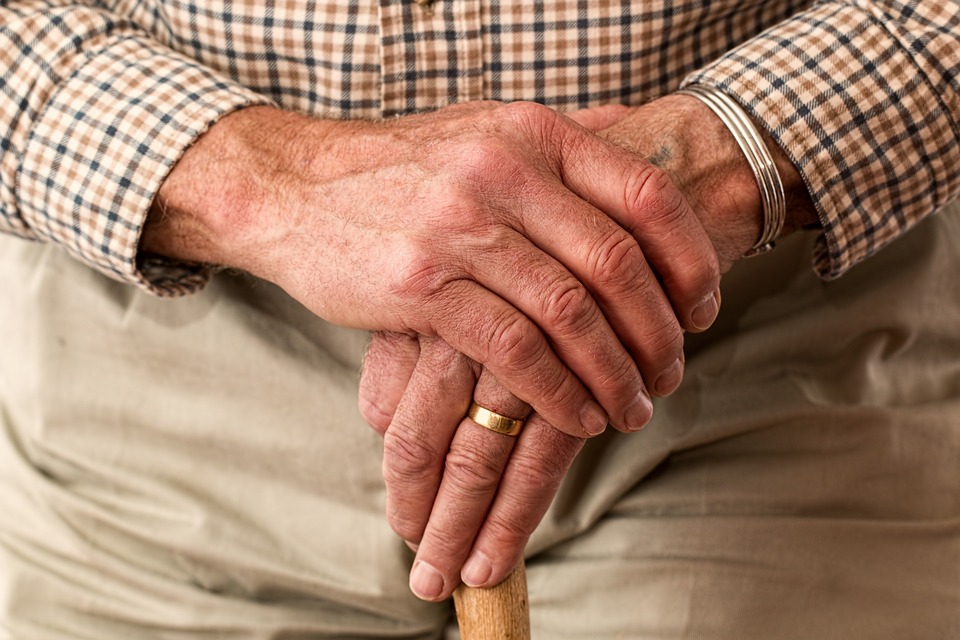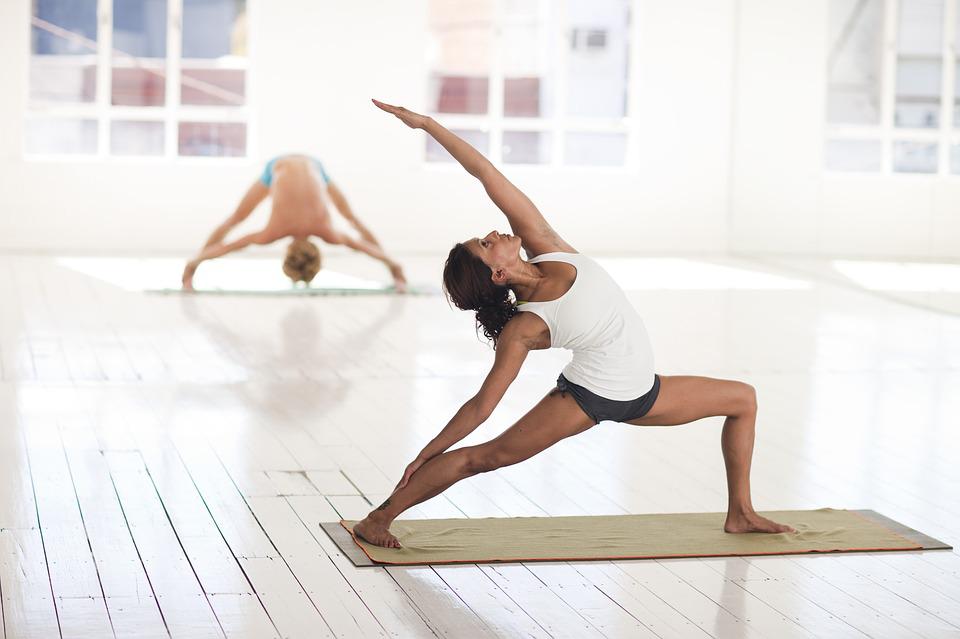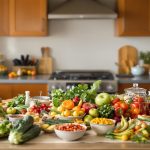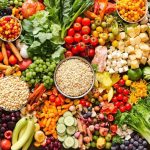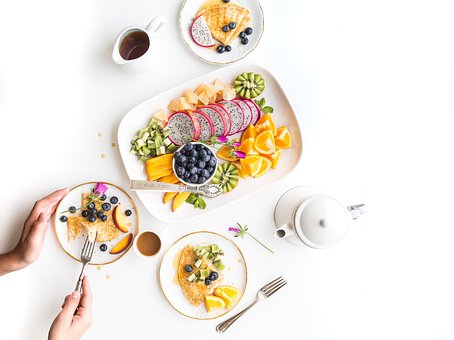
Women over 50 should have diets that are balanced, tasty, and practical enough to keep up with for a long time. Gaining an understanding of how to get the most nourishment out of your meals will aid in reducing signs of aging, improving your overall well-being, and heightening your satisfaction with life!
When you are in your 50s or older, it is essential to consider a few points when you aim to remain healthy or become healthier. No matter what your goal is – be it slimming down, shedding fat, keeping your current weight, or building muscle – your nutritive requirements stay the same.
Continue reading to find out more on the top anti-aging diets for women over 50 and how you can start creating beneficial eating habits TODAY!
What Bodily Changes Happen to Women Over 50?
There are trillions of cells in your body that are collaborating to ensure your survival. Nevertheless, these cells begin to alter as we get older. As they get bigger, they become less able to divide, operate efficiently, and reproduce. The ability to fix DNA deteriorates, which raises the threat of illness.
Since cells make up tissues and organs, transformations take place all over your body. Everything transforms including skin, bones, muscles, joints, and organs. The getting older process affects your nervous, immune, reproductive, endocrine, digestive, musculoskeletal and cardiovascular systems.
The way one ages is determined by genetic makeup, living habits, and one’s surroundings. As aging is an unavoidable process, having a nutritious and balanced diet can help to postpone or reduce its effect. A diet that contains a lot of calories, processed foods, and saturated fats can cause a person to age more quickly.
Wondering what part of the body ages fastest? You may believe it’s your complexion, but it’s really your bust. A study presented by Genome Biology concluded that breast tissue had the most visible signs of aging compared to any other part of the body.
When estrogen levels diminish due to menopause, the glandular tissue in the breasts begins to diminish too, ultimately leading to a decrease in breast size. The supporting connective tissue of breasts becomes lax, causing them to droop down. The area on your neck and chest known as the decolletage is vulnerable to a premature aging process when exposed to the sun, which makes it critical to safeguard it with a sunscreen that guards against multiple spectrums of light.
Get Enough Protein
For keeping muscles strong and healthy, it is important to get enough protein in your diet.
For those aged 50 and above, the daily recommended amount of protein needed increases from 0.8 to 1 to 1.2 grams for every kilogram of body weight. After you hit fifty years of age, 0.45 to 0.55 grams of protein are required for each pound of your body weight. In other words, for a woman weighing 150 pounds, she would need 67 to 83 grams of protein.
Legumes, beef, chicken, seafood, eggs, and milk products all contain high amounts of protein. Ensuring that you receive an adequate amount of protein can be accomplished by having a portion with each meal and snack.
As an example, you could have an egg or milk to start off your day or try adding some pea or soy protein to your morning shake. Eat a turkey sandwich at lunchtime or include tofu or canned salmon in a salad. For supper, you might want to consume 3 to 4 ounces of chicken breast, a veggie burger, or a bean burrito. Snacking on edamame, fruit spread with nut butter, and fat-free yogurt are all great sources of protein.
Additionally, to try to safeguard your muscular strength and vigor while raising your metabolic rate, make sure you carry out resistance training several times each week. It is possible to include dumbbells, resistance bands, and bodyweight exercises such as push-ups and lunges into your workout regimen. Doing yoga on a consistent basis can help you build up your muscles and become stronger.
Eating for Strong Bones
After the age of 50, there are numerous activities you can do to stop the weakening of your bones and maintain bone health.
Calcium
First, make sure to consume enough calcium. The amount of calcium needed every day goes up from 1,000 milligrams to 1,200 milligrams after the age of fifty. Choices for good items to consume with calcium content include things like reduced-fat dairy products, beverages that are reinforced with calcium, edamame, tofu, canned sardines, and salmon which contain bones.
Magnesium
After menopause, it is advised to gain a higher intake of magnesium so that bone loss can be prevented. The usual amount expected for grown women is anywhere around 310 to 320mg every day. This mineral can be present in a high concentration in a wide variety of foods, such as almonds, peanuts, cashews, beans, soy products, leafy green vegetables, fortified breakfast cereals, dark cacao-based products, and whole grain items.
Vitamin D
It is essential to have enough Vitamin D in order to aid calcium intake. Research is pointing toward a potential link between a lack of vitamin D and cardiovascular disease, as well as other long-term illnesses.
Many women are not receiving an adequate amount of vitamin D, much of which typically comes from the sun, particularly those who reside in northern areas. Research has demonstrated that more than 40% of adults in the US don’t get enough of their required intake of vitamin D.4
The U.S. The Institute of Medicine proposes an average daily dosage of between 400 to 800 International Units (IU); however, certain studies recommend daily intakes ranging from 1000 to 4000 IU, with the safe maximum set at 4000 IU. Getting a blood test to determine the amount of vitamin D you have in your system is advisable so you know how much you need.
Certain types of fish like tuna, sardines, salmon, and cod liver oil are excellent sources of vitamin D. A lot of foodstuffs have been supplemented with vitamin D, such as grains, bovine milk, soy milk, and orange juice. You can also have a vitamin D supplement to guarantee that you are having the right amount.
Collagen
Consider adding collagen to your diet. Studies have demonstrated that the taking of collagen can give you a way to reach yourprotein needs, and that it may even increase bone mineral density for postmenopausal women.5, 6
Melatonin
The production of melatonin, a hormone which assists in inducing sleep, may also help to protect against the thinning of bones typically associated with postmenopause. The results of a thorough investigation of three separate clinical tests suggest that melatonin, when taken as a dietary supplement, could possibly be used to bolster bone density in women going through menopause or beyond; however, further studies must be conducted to ascertain its helpfulness.
Supplementation to Cover Your Nutrition Bases and Provide Additional Support
Consuming a healthy diet is the initial way to fight the effects of aging, however taking the appropriate supplements will guarantee that your body receives the rest of the important nutrients and encourages aging well.
Multivitamin
Begin taking a supplement that contains a combination of vitamins and minerals designed specifically for women over the age of fifty. If you have gone through menopause and don’t have any blood loss, look for products that are low in iron or have no iron in them.
Omega-3 Fatty Acids
The Dietary Guidelines for Americans advocate that people should have a minimum of 8 ounces of fish each week. If you don’t have the recommended amount of fish in your diet, contemplate taking an omega-3 supplement, or utilizing oils containing a lot of omega-3 fatty acids, like flaxseed oil.
Investigations have revealed that wholesome fats, comprising omega-3 fatty acids, could also reduce signs of menopause. Evidence has indicated that Omega-3 fatty acids are beneficial for both brain and heart health, as well as markedly reducing inflammation.
Sample Diets for Women Over 50
Women over 50 should eat a nutritionally balanced diet in order to avoid lacking in vital nutrients, increase their vitality, and keep their body mass lean.
You can maintain a healthy eating plan in the long run instead of trying quick-fix fad diets.
Healthy Breakfasts
Be sure to include protein, fiber, and good fat in every nutritious morning meal you make. Examples include:
- Protein Shakes
Shakes that are beneficial to women’s health could consist of plant-based milk, a scoop of protein powder, a portion of nut butter or fruit, and a few cubes of ice.
Cut out or drastically reduce the amount of nut butter to aid in weight loss.
If you are aiming to build muscle, you can boost the calorie count of a smoothie by adding more protein powder or a nut-based spread.
- Vegetable Omelet
Selecting a morning meal that is high in protein, like a veggie omelet, can be beneficial for attaining or sustaining a healthy weight.
Think about making an omelet consisting of 2 or 3 eggs with asparagus, zucchini, tomatoes, spinach, and/or peppers, then top it off with olives, avocados, or feta cheese.
- Avocado Toast with Uncured Turkey Bacon or Eggs
Switch up your morning routine by having some avocado toast using Ezekiel bread, smashed avocados, and either uncured turkey bacon or eggs.
This breakfast is both appetizing and nourishing, and it will provide sustained energy throughout the day.
- Oatmeal or Whole-Grain Cereal
Mix protein-enhanced milk or protein powder into fiber-laden oatmeal before you heat it up.
For a healthy breakfast, select whole-grain cereal mixed with almond milk that is rich in protein, plus some fruit and chopped walnuts or almonds.
- Black Bean Scramble Recipe
This black bean scramble can add protein, fiber, and deliciousness to your morning meal.
The components necessary for this recipe are eggs, black beans, salsa, flavorings, and grated cheese.
Adhere to the guidelines for the recipe, which will take you only 10-15 minutes, and savor your healthful breakfast!
Try swapping out full-fat cheese for its reduced-fat counterpart, using avocados, or a little bit of vegetable oil instead when looking to reduce calories for weight loss. Else, you could opt to leave out the cheese altogether.
Substitute tofu for eggs and skip the cheese if you’re following a vegan meal plan.
- Matcha Green Tea Protein Smoothie
When you require a morning meal that will give you a surge of energy and lasting fullness, then this formula for a matcha green tea protein shake is the ideal solution.
This recipe calls for vanilla almond milk, matcha green tea powder, vanilla protein, and ground flax as components.
Mix all the components in a blender along with some ice cubes and savor the deliciousness!
Nutritious Lunches



